| TennisOne Lessons The Serve within the Advanced Foundation Using Pro Strokes to Identify Key Differences and Similarities David W. Smith, Senior Editor TennisOne For many recreational and club players, being able to serve 100 miles per hour has been a test, a gauge of competency—for bragging rights if nothing else. Hitting 100 mph in and of itself is not as important obviously as getting that serve in. Ironically, the same components that create the opportunity to get a 100 mph serve in are also the components needed to generate that speed. In other words, you seldom see one without the other. The serve has been discussed in many articles. Most identifying a particular player’s service sequence, a particular type of serve, or various ways to increase a serve’s effectiveness. All of these articles provide a great deal of pertinent information regarding the serve. However, I wanted to provide a clear “blueprint” for anyone who is looking to either build their serve from the “ground up” or understand why their current serve is not the weapon it should be. In addition, developing these specific parts of the serve increase the potential for speed for every player. Understand that there are individual “restrictions” on how far a person can take their serve. However, most of these are based only on physical limitations, (ie: limitations in flexibility or strength, disabilities or handicaps, or a lack of overall athleticism or coordination.) For the vast majority of tennis players, a lack of service progress and improved effectiveness will be predicated on poor service mechanics or an inconsistent toss or swing path. By breaking the serve down into component parts, you should be able to better incorporate proper mechanics, gain far better serve speeds, and then employ these mechanics during actual match play. Keep one thing in mind: Every player will develop personal idiosyncrasies within their service motion. This should come as no surprise; if you watch the pros, there are significant differences among the players. Yet, those differences don’t detract from the overall foundation of each player’s serve. There certainly are slight differences in the effectiveness between one player’s serve and another in competition. However, nearly all the women on tour can serve over 100 mph consistently (and many at 110 mph and higher!), the average recreational or club player, male or female, would be ecstatic if they could replicate that kind of power! I often see men in their athletic prime, muster up every ounce of testosterone and end up hitting less than 80 mph! So, why do so many recreational players fall so far short of having an effective, offensive serve?
Stance One of the most inhibiting factors in a player’s failure to achieve racquet head speed is the early rotation of the body prior to contact. A closed stance helps players stay sideways longer, but even a good stance can be corrupted and negated by this early rotation.
From the stance, there are two schools of footwork that occurs after the toss: Pinpoint Stance and Platform Stance. (Pinpoint is when the player brings both feet together before the explosive move to contact; Platform stance is where the player keeps both feet apart prior to the move to contact.) Both these stances are used by the pros and, while some teaching pros favor one stance over the other, I don’t see any advantage in terms of allowing a player to reach serving potential. Thus, a student should try both and determine which stance feels most comfortable.
The coil can include a deeper knee bend as well. However, don’t be confused by the percentage of what the knees can add to a serve. You will hear some pros pontificate that the knee bend can add twenty to forty percent of a serve’s pace. This is blatantly false. I demonstrate in clinics all the time. I can serve over 100 mph when sitting on my knees (and still get the ball in the court). Yet, I can only serve about 115 mph with my full leg and knee bend. Thus, at best, the use of legs in my situation adds 15%; not 20% and certainly not 40%! At the professional level, however, even 10% is significant. If the pros average speed is 120 mph, 10% faster would put them at 132 mph, a significant difference. For recreational players, 10% is usually insignificant because such players, due to improper swing components, can’t generate much more than 60 or 70 mph. Thus, 10% increase of a 70mph serve would only equate into a serve that is about 77 mph, a relatively minor difference from the standpoint of effective service speed. The point here is that the use of the legs, in the overall serve picture, is not a dominant factor. When all the other elements are accomplished well, then the use of the legs would be advantageous to employ. The problem is that many recreational players employ the legs at the wrong time, in the wrong way, and, as a result, the use of the legs detracts from the player executing a better serve.
Ball Toss The basic idea I teach my students is to imagine the racquet pulling the body around after contact. Obviously, each serve, from kick to slice, from flat to topspin, will have a different swing path relative to the ball as well as a different contact point upon the ball. What players fail to do is get the racquet path established for the desired serve. Many don’t even know what a particular path they are—or should be—taking for a given serve.
In simple terms, a slice serve requires a racquet path that brings the strings across the ball at the equator of the ball with a north/south (or vertical) axis. If the strings of the ball square up to the ball too early, the element of slice is severely diminished and the only serve choice at this point is generally a pancake or paddy-cake flat serve. Likewise, the swing path for a topspin serve is up the back of the ball as close to a “6 to 12” clock face analogy swing path with the ball having a horizontal spin axis that is nearly parallel with the baseline. This requires the player to stay very sideways through most of contact as well as a racquet that starts more behind the player’s back instead of dropping to the side of the player. A kick serve requires the player to stay even more sideways and the racquet head brushing up the inside portion of the ball and the ball’s axis is not just horizontal, like the topspin, but is also pointing towards the left hand net post for a right-handed server. Reaching high speeds and hitting specific spins are predicated on the player accelerating the racquet head past the hand and not trying to swing as if you were swinging a heavy axe. (This would be a swing that brings the hands and arms down much earlier than the heavy axe head which catches up to the hands at contact with the wood being chopped.) One of the biggest problems when players try to swing harder, they tend to swing harder with the arm (as in the axe analogy above) and end up getting their maximum racquet head speed well after contact. Players who serve this way can be seen leading with their hitting elbow through most of the swing. A player must train themselves to “wait” with the arm and allow the hand and racquet head to whip past the forearm and elbow. In every skilled player’s serve (and overhead action), you will see the racquet head catch up and pass the hitting arm at contact and finish usually with their racquet head pointing almost straight down.
The shoulders and upper body, both which had started to uncoil well before contact, have stopped uncoiling prior to contact, again allowing the hitting arm and eventually the racquet to catch up and, whip past the body. (Similar to “waiting” with the arm and elbow, the body will need to resist the urge to bring the racquet around.) Two additional serve elements that add to speed are "Forward Lean" and "Upward Thrust". While each of these two serve components each only add a small percentage of speed in and of themselves, they contribute greatly to the overall effect of speed or pace of a serve. Forward Lean refers to the combination of tossing the ball more 'into the court', that is, towards the net, and then the server leaning in with his toss shoulder towards the net to attack the serve. The problem many players have when they toss the ball forward is the "chase" the ball by rotating the shoulders and facing the net too early. (Premature body rotation.) When this happens, it becomes impossible to create a racquet path that is optimal for both spin and trajectory. Thus, when you do toss more forward, remember to lean in sideways allowing your swing path to still be across the ball, yet more AT the ball as well. The Upward Thrust element is the controlled use of the legs in an upward, explosive thrust (combined with the sideways position I just mentioned). This action adds a small percentage of added inertia and body weight into the serve. Momentum of any serve is increased when you add mass to the moving or connecting object. Thus, by adding the legs in driving up to the ball at contact, you add a percentage of your body's weight to the serve.
The finish of 99% of all great servers is to push off and land on the non-dominant front foot. For right-handed players, this means to feel the front left foot of the stance push off the ground and then land on this foot as the player follows-through. The back leg kicks back as a result of several factors: the back leg kicking back helps prevent the hips and legs from over rotating; the kick-back is a natural “action-reaction” of body parts which occurs when there is significant speed in one portion of the body, (similar to the “recoil” of a rifle); it also helps the player remain balanced during the end of the follow-through…sort of a counter-balance weight for the body. One of the most common components of a poor serve is the back leg swinging around the body during contact, and the player usually stepping into the court first with this back leg. Your comments are welcome. Let us know what you think about Dave Smith's article by emailing us here at TennisOne .
TENNIS MASTERYFinally. a resource that unlocks these mysteries: • Why do m • Why are making changes in one's game so frustratingly difficult? • What tennis teaching methods are disruptive or detrimental to player progression? Read David W. Smith's TENNIS MASTERY and learn not just how to avoid playing at mediocre levels, but how the best players in the world Master the sport of tennis! "With a depth of knowledge and fresh perspective, TENNIS MASTERY is set to become a manual for tennis instructors and a measure for tennis literature." Richard Wigley, Director, Kayenta Tennis Center, Ivins Utah. Take in David Smith's 30 plus years in the tennis teaching industry. This 335-page manual will provide for every level of player as well as support for all tennis-teaching professionals, a blueprint for reaching higher levels of tennis mastery. Order TENNIS MASTERY at tenniswarehouse.com , or go to tennismastery.net for exciting excerpts from the book and a host of tennis information! And check out David Smith's other articles found here at TennisONE.com |
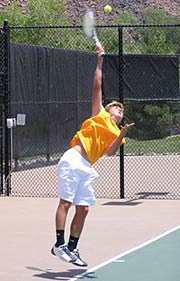

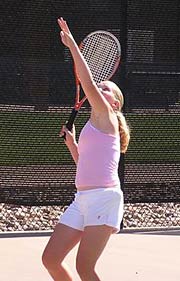

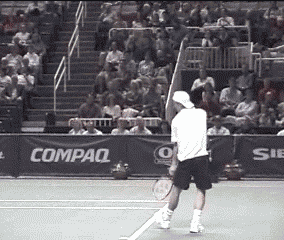
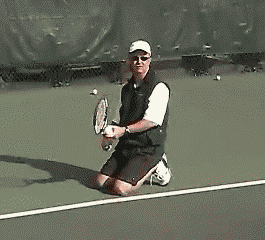
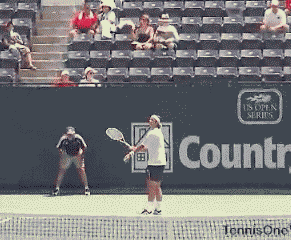
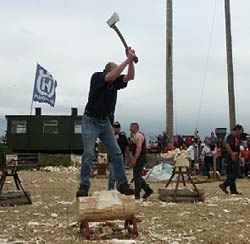


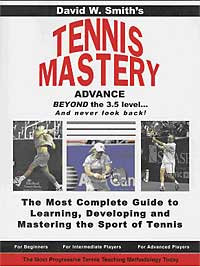 illions of tennis players stagnate at levels far below their potential?
illions of tennis players stagnate at levels far below their potential?